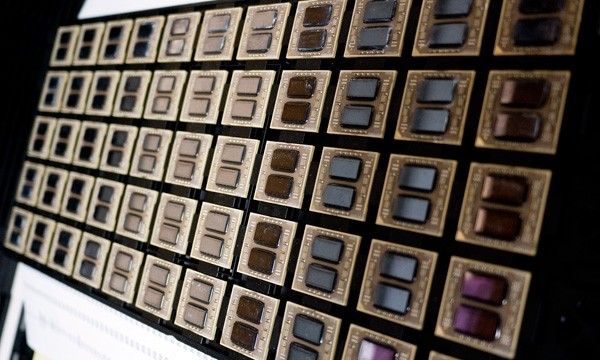Via managed to get some buzz going on when the Isaiah architecture and Nano processor were first introduced back in 2008. But even though early benchmarks seemed promising performance-wise, Intel had the upper hand when it came to power consumption and quickly took the market by storm. It was only this year that AMD came out with a competitive alternative for netbooks and budget laptops and now it seems VIA is ready to give it another go.
Following the introduction of its Nano X2 processor back in January, which is a dual-core implementation of its Isaiah architecture built on TSMC's 40-nm chip fabrication process, VIA is now introducing the QuadCore processor combining a pair of Nano X2 chips on a single package to deliver a low-cost, low-power alternative to Atom and Brazos.

The pair of Nano X2 chips are connected by a shared 1333MHz FSB and each has two 1MB independent L2 caches, for a total of 4MB of L2 on-package. Initially VIA will be introducing a single model of the QuadCore, known as the L4700, which is rated for 1.2GHz operation and a maximum TDP of just 27.5W. The QuadCore can dynamically clock up to frequencies as high as 1.46GHz, however, provided there's enough thermal and power headroom available, thanks to a new feature called Adaptive Overclocking that appears to work very much like Intel's Turbo Boost.
The chip is designed to run multimedia, productivity and Internet applications, according to VIA, and will be pin-to-pin compatible with Via Eden, Via C7 and Via Nano E-Series and Via Eden X2 processors. The company offered some results from its own internal benchmarks compared to an AMD E-350 APU, and the QuadCore seemed to have a clear advantage in CPU intensive tests, encryption, and some multimedia as well.
In terms of power consumption Brazos and Atom still have an advantage, though, not to mention that with less than 1% of the x86 market VIA lacks the market pull of Intel or AMD. But it's still interesting to see some more competition in the market and we're eager to see if they manage to score some design wins from major notebook vendors. You can read a bit more about the QuadCore and take an inside look of VIA's simulation labs over at AnandTech and HardOCP.
https://www.techspot.com/news/43763-via-introduces-quadcore-processor-for-notebooks.html